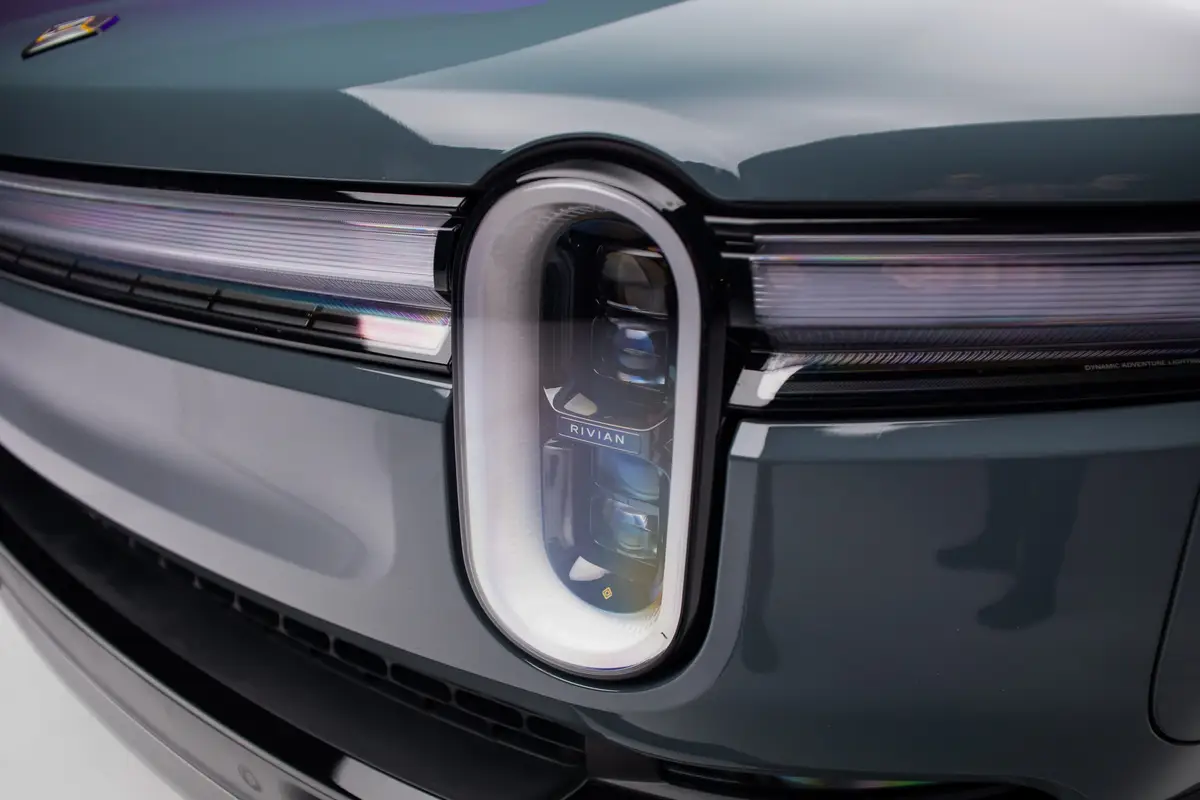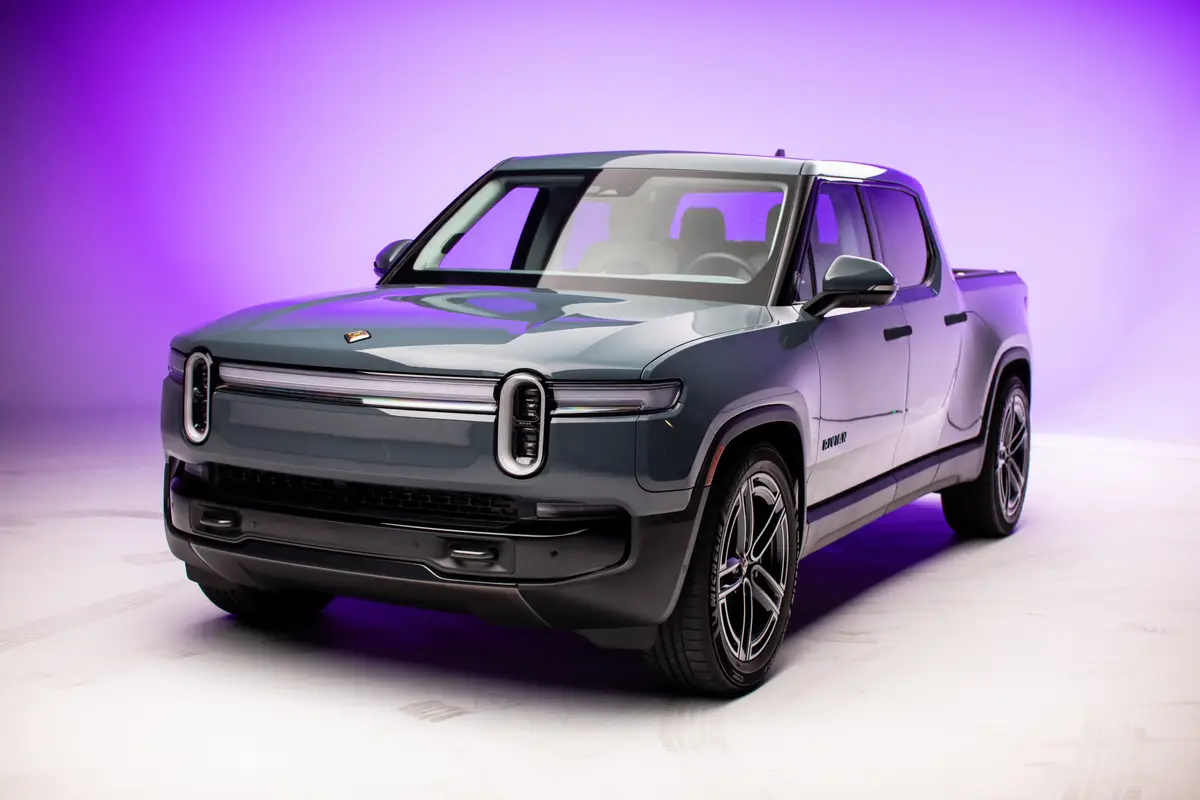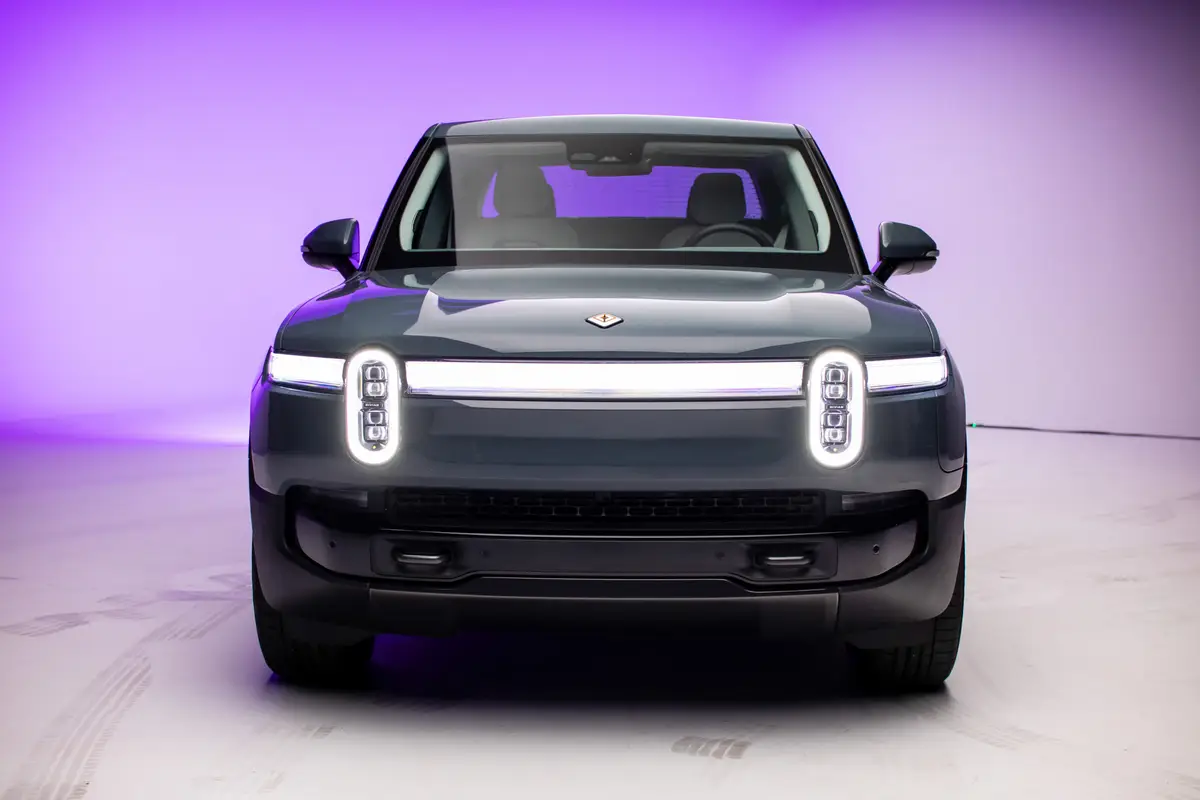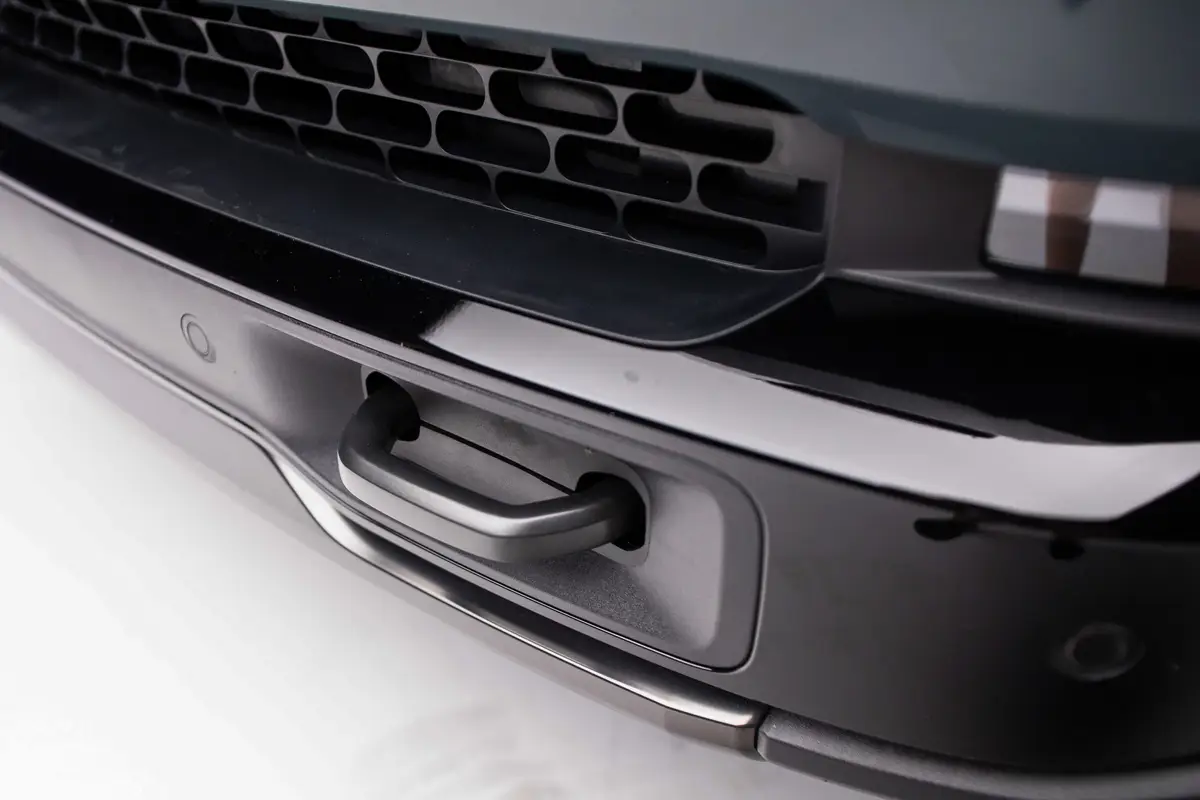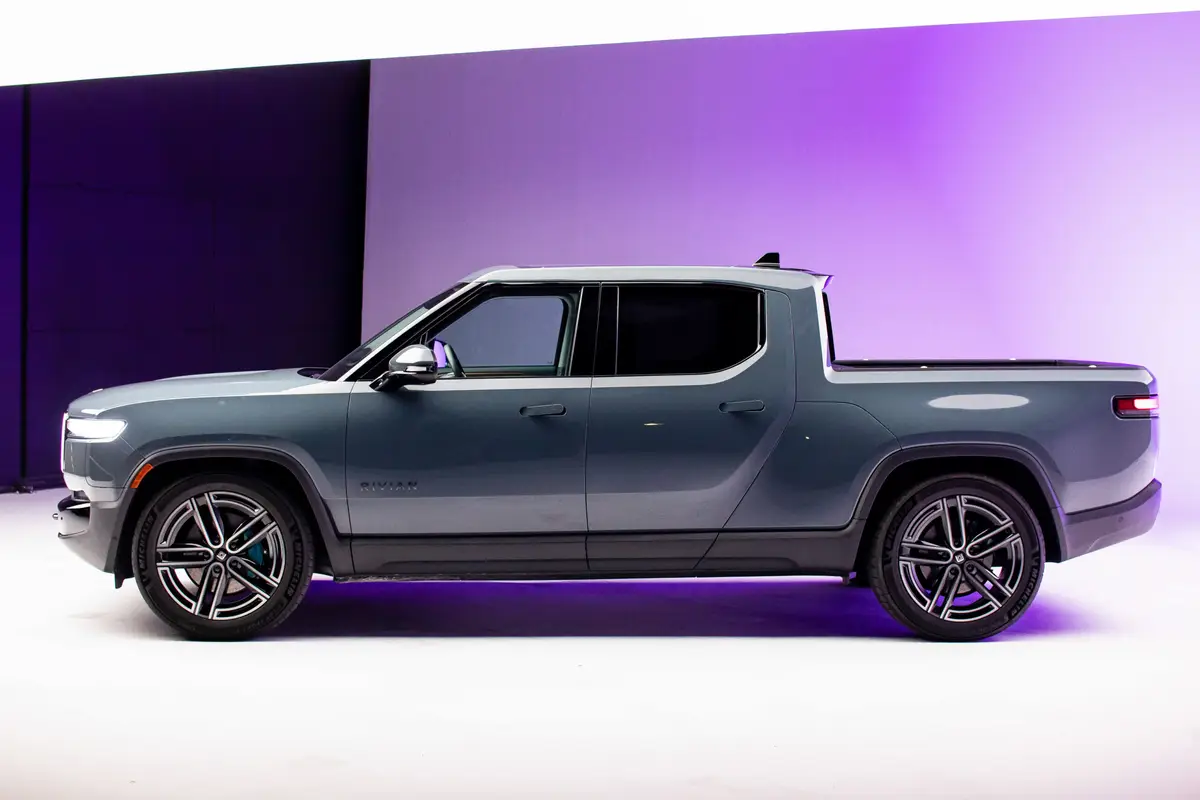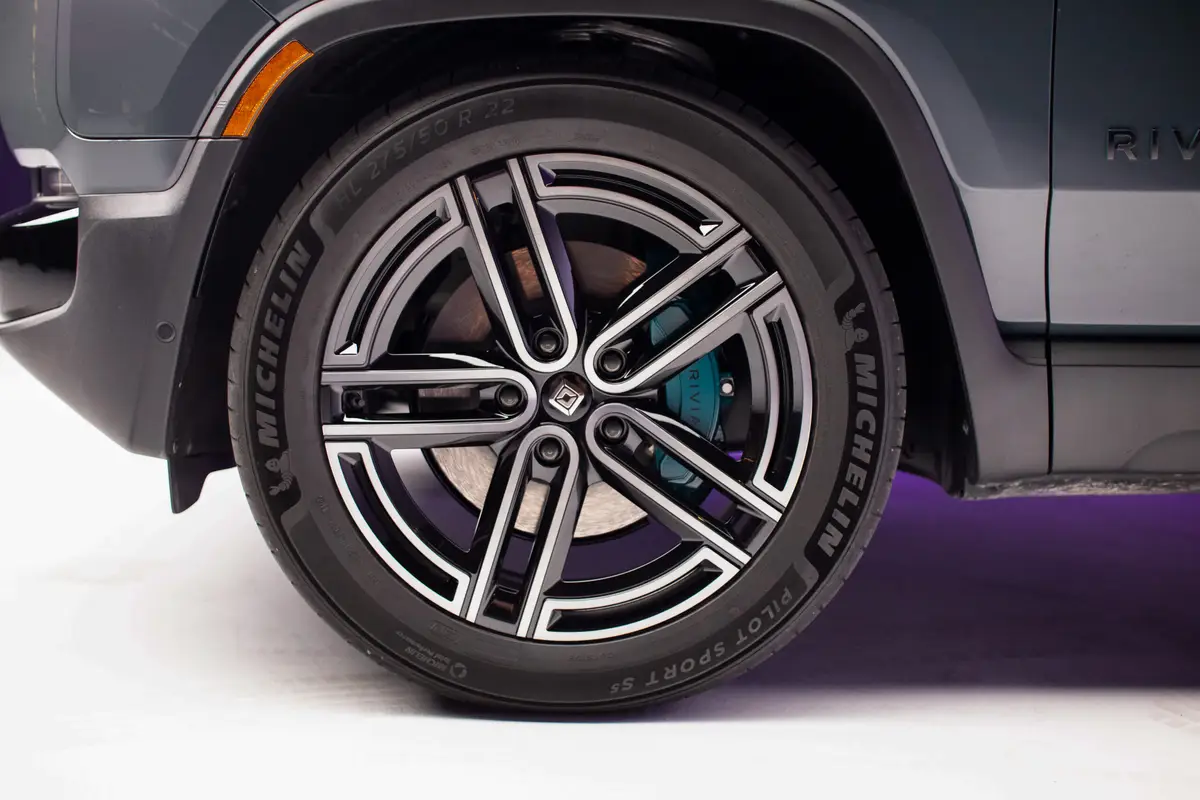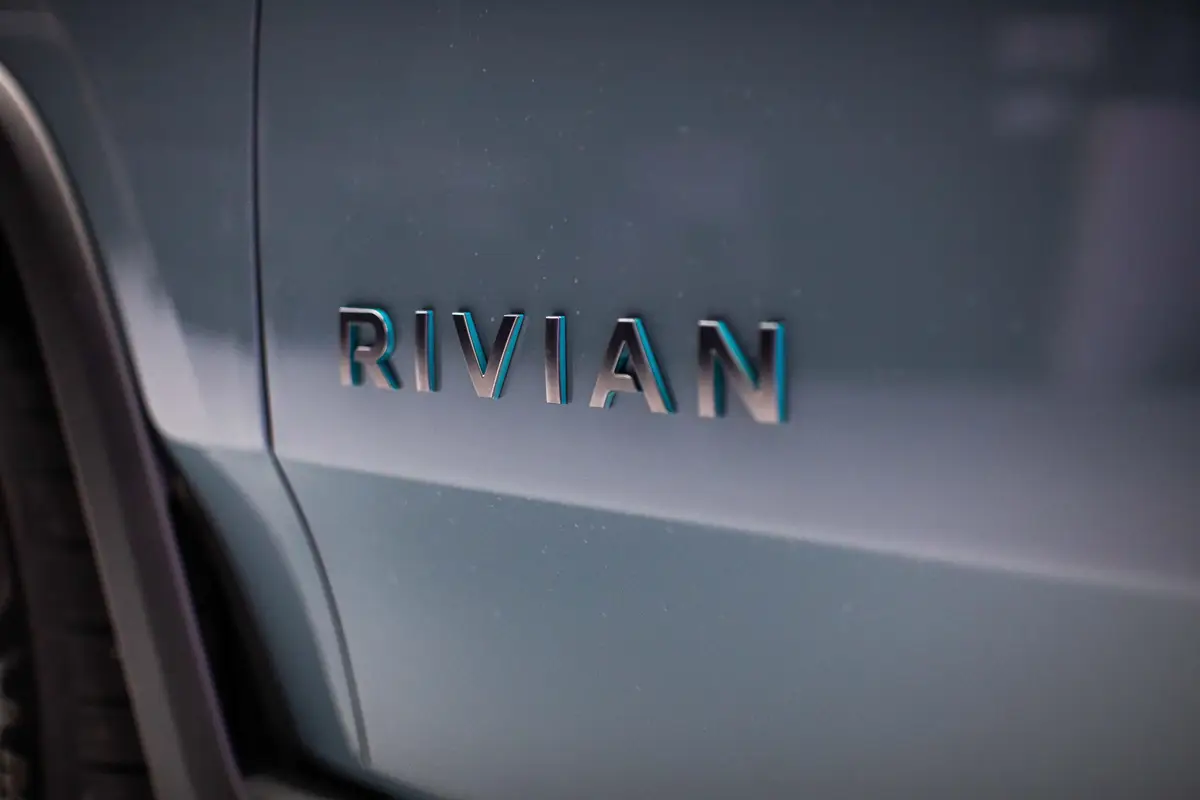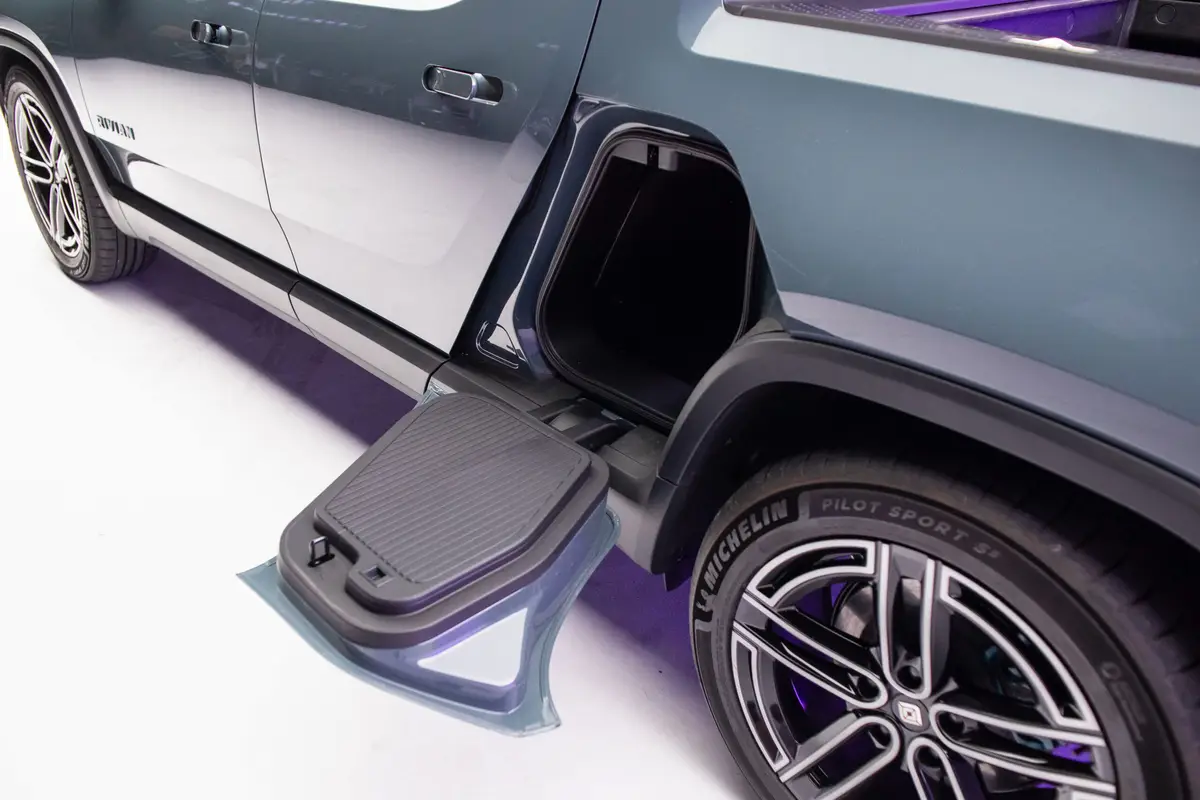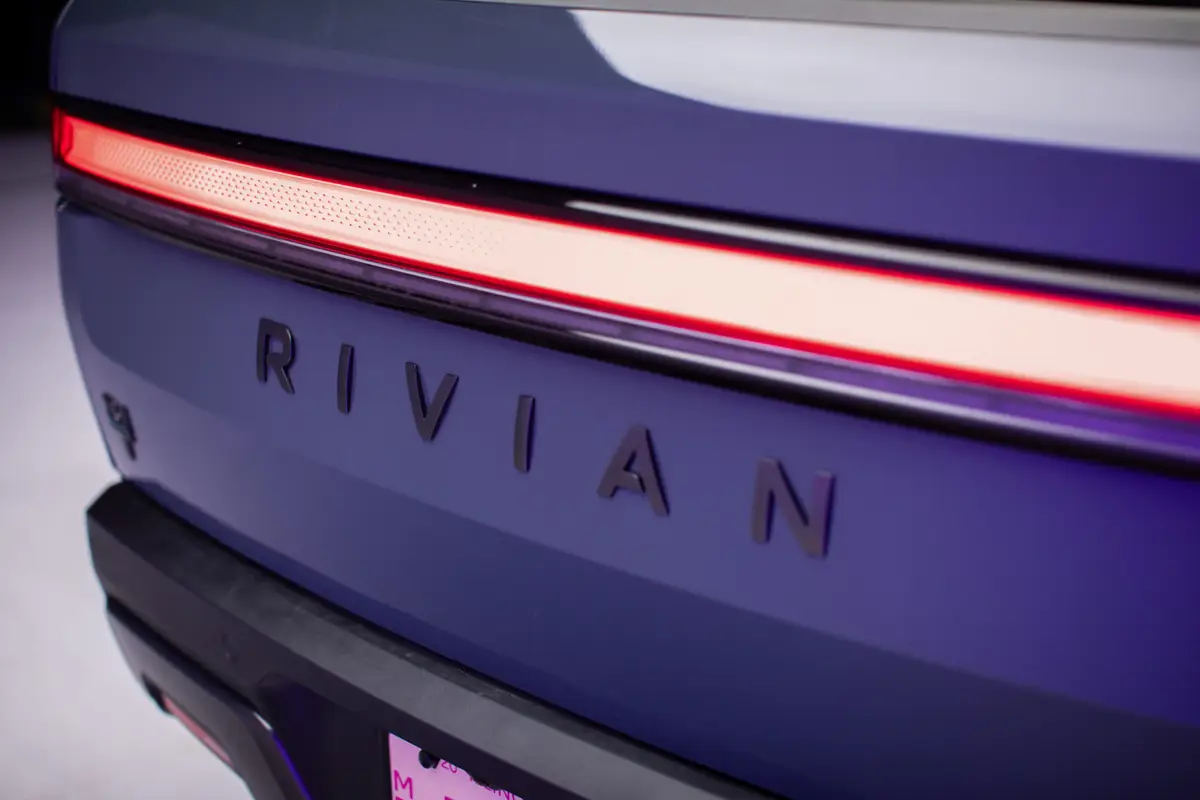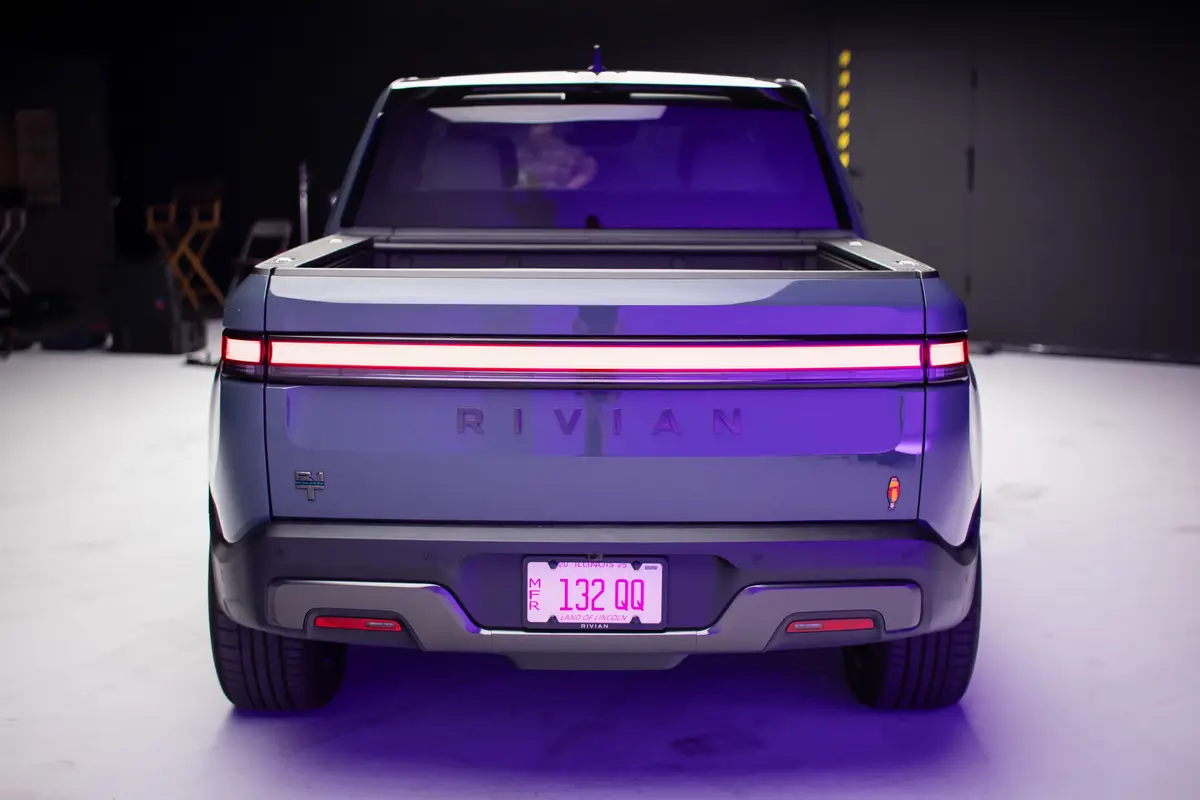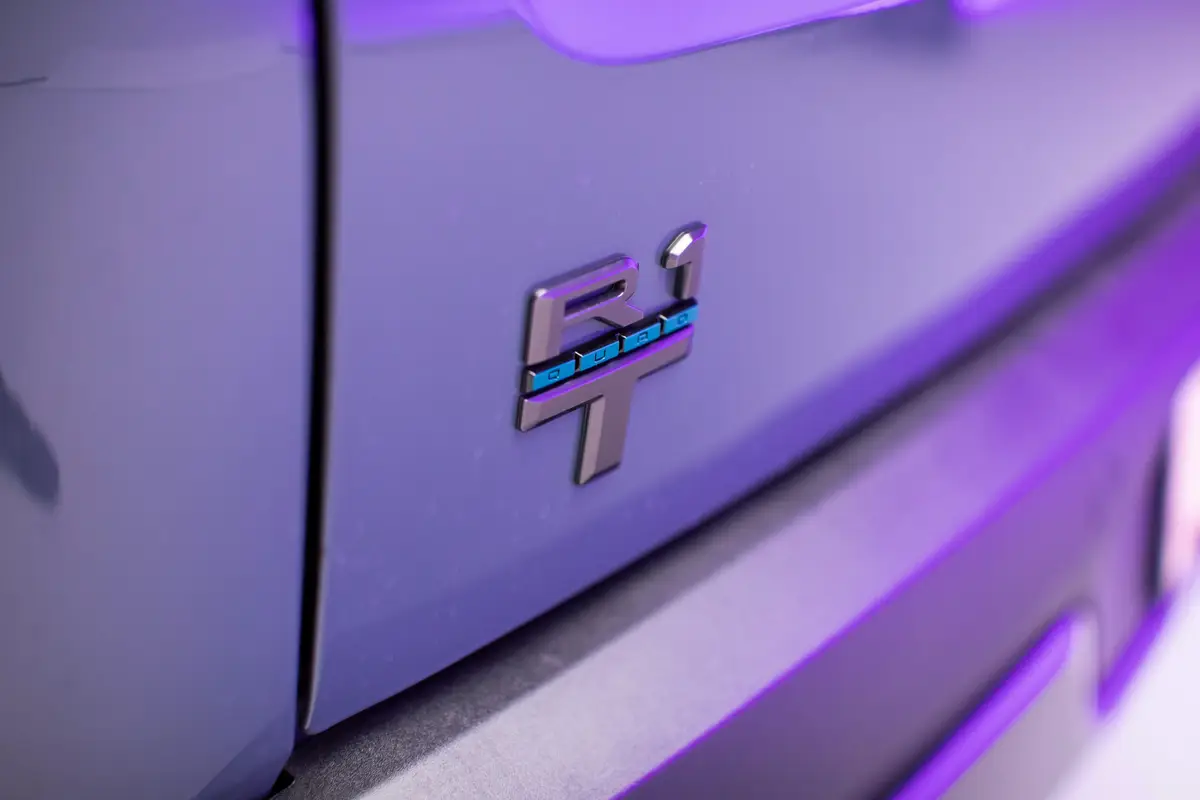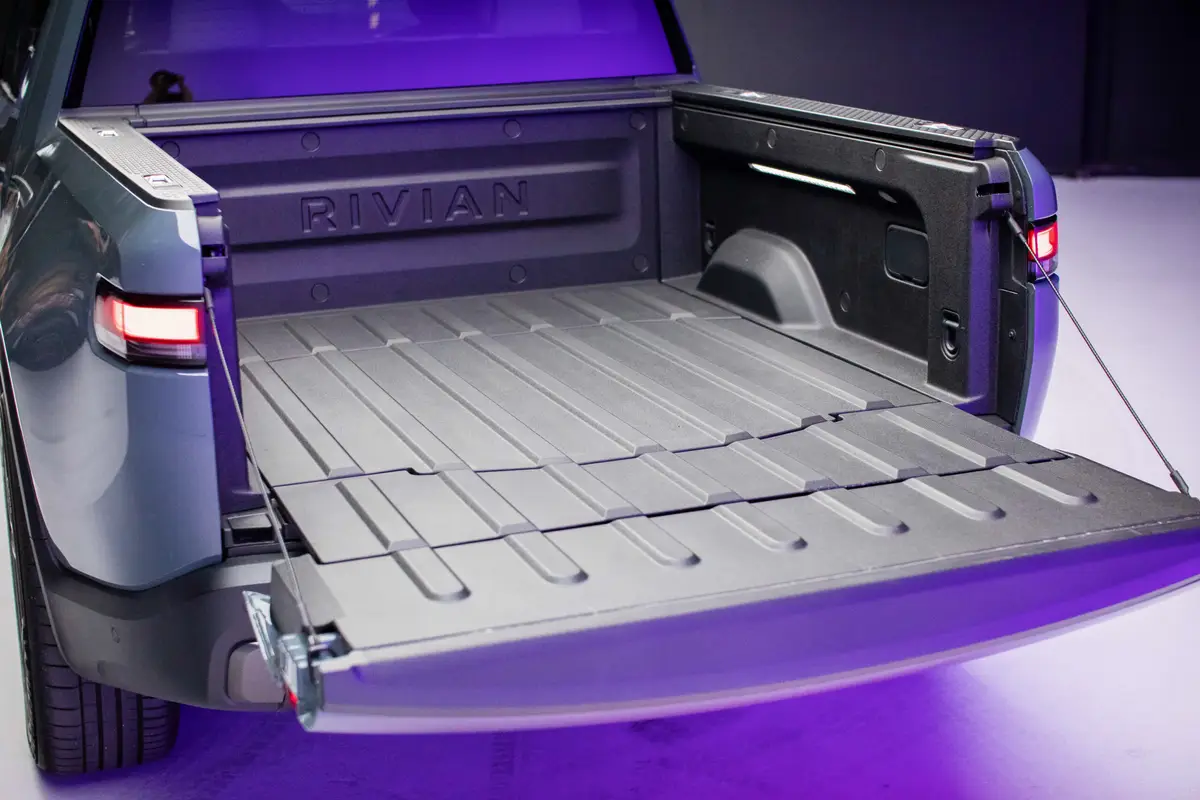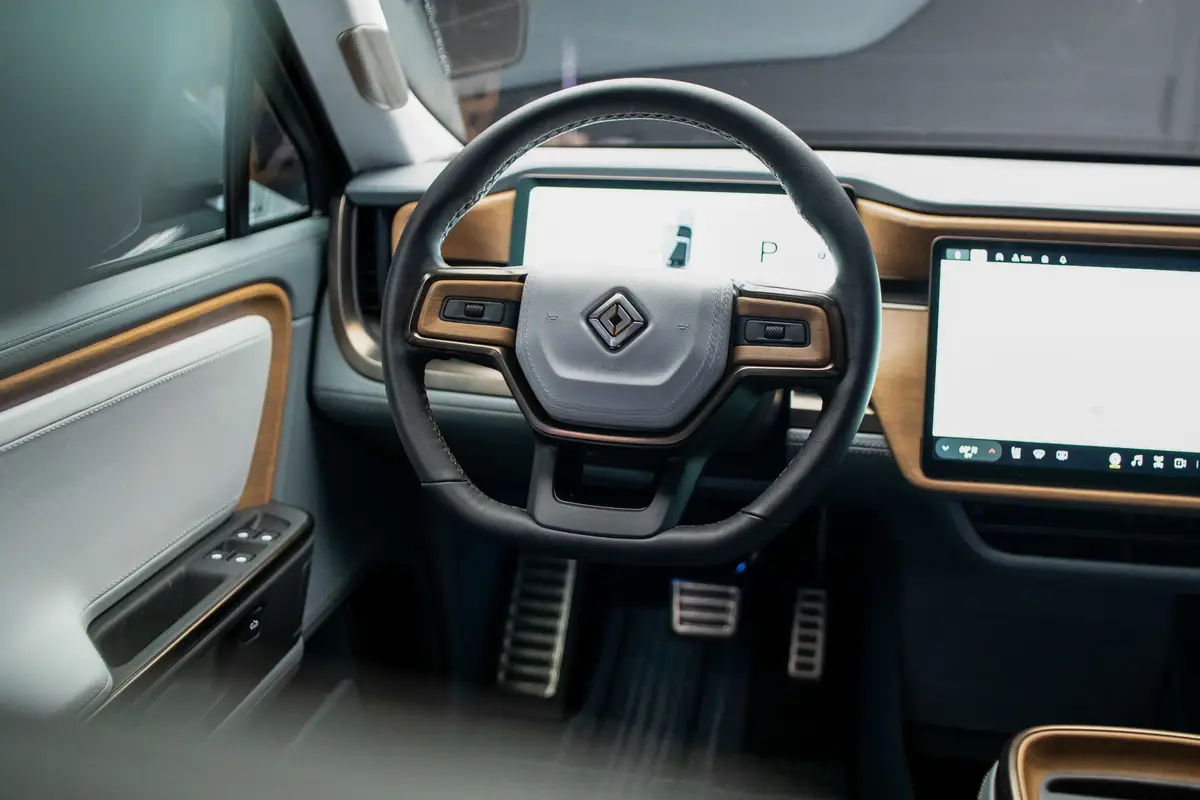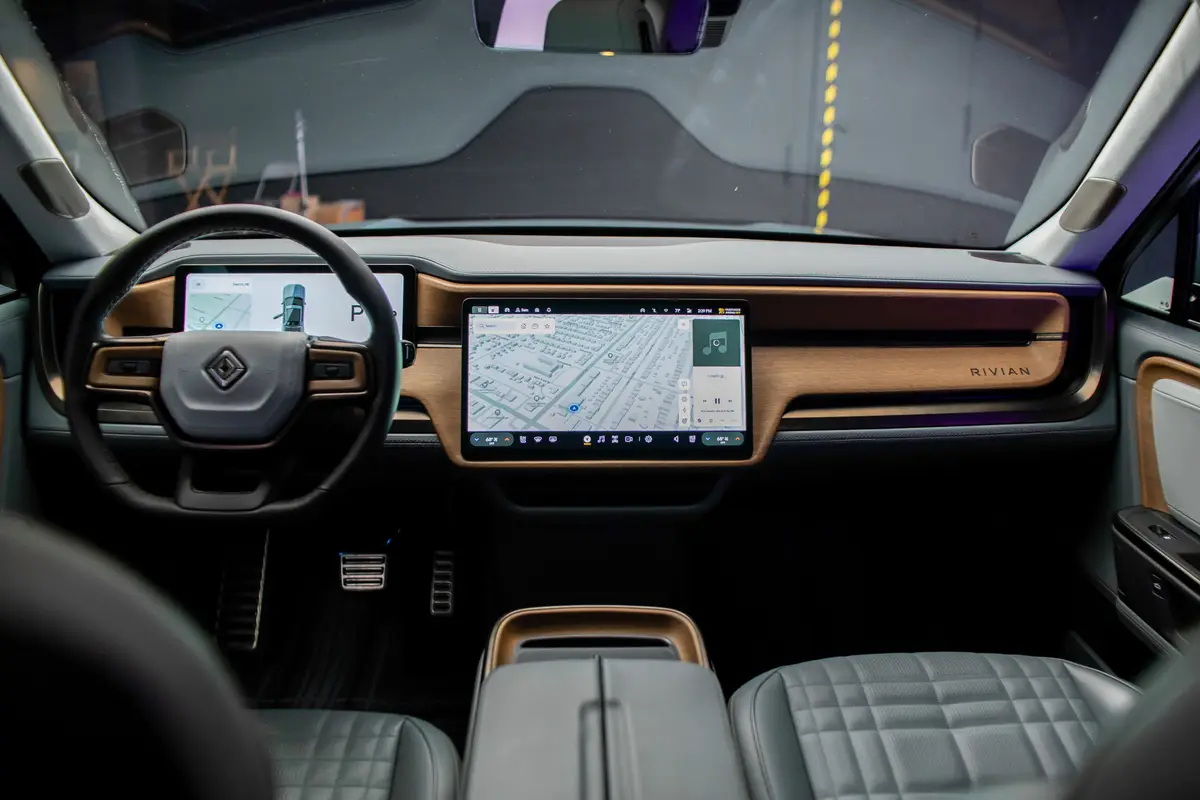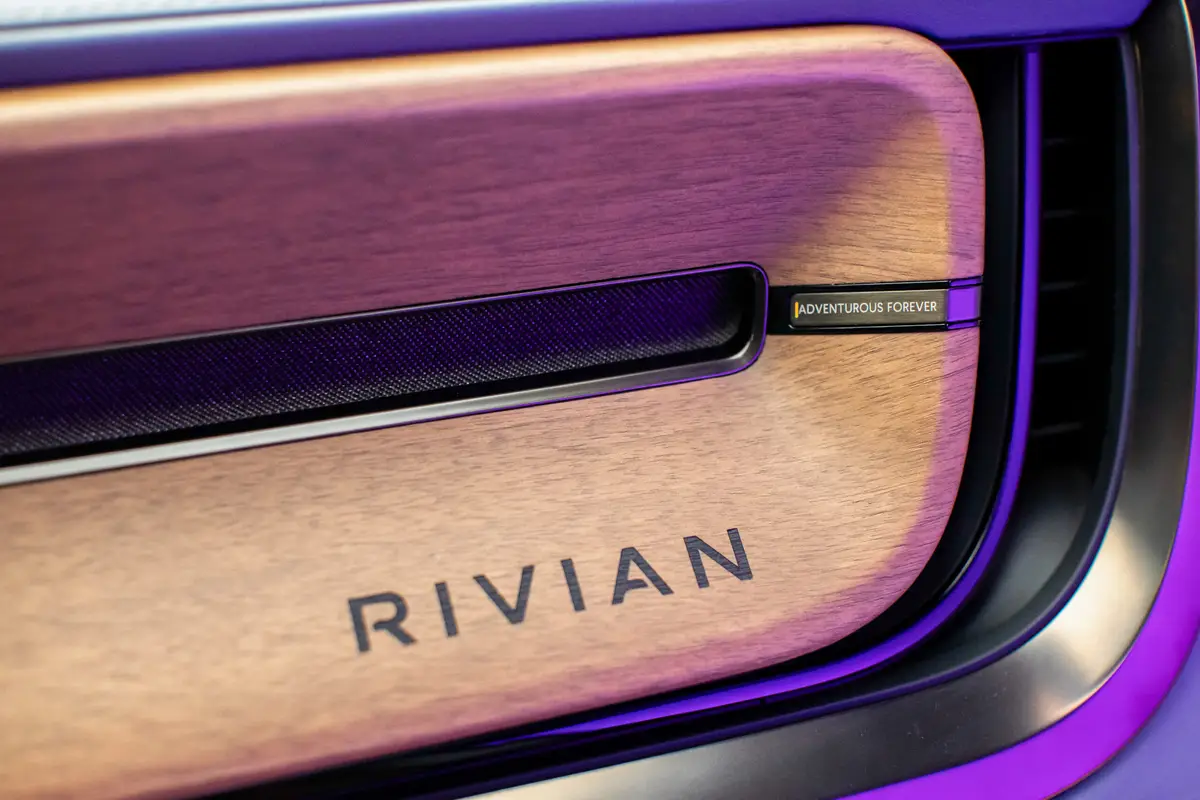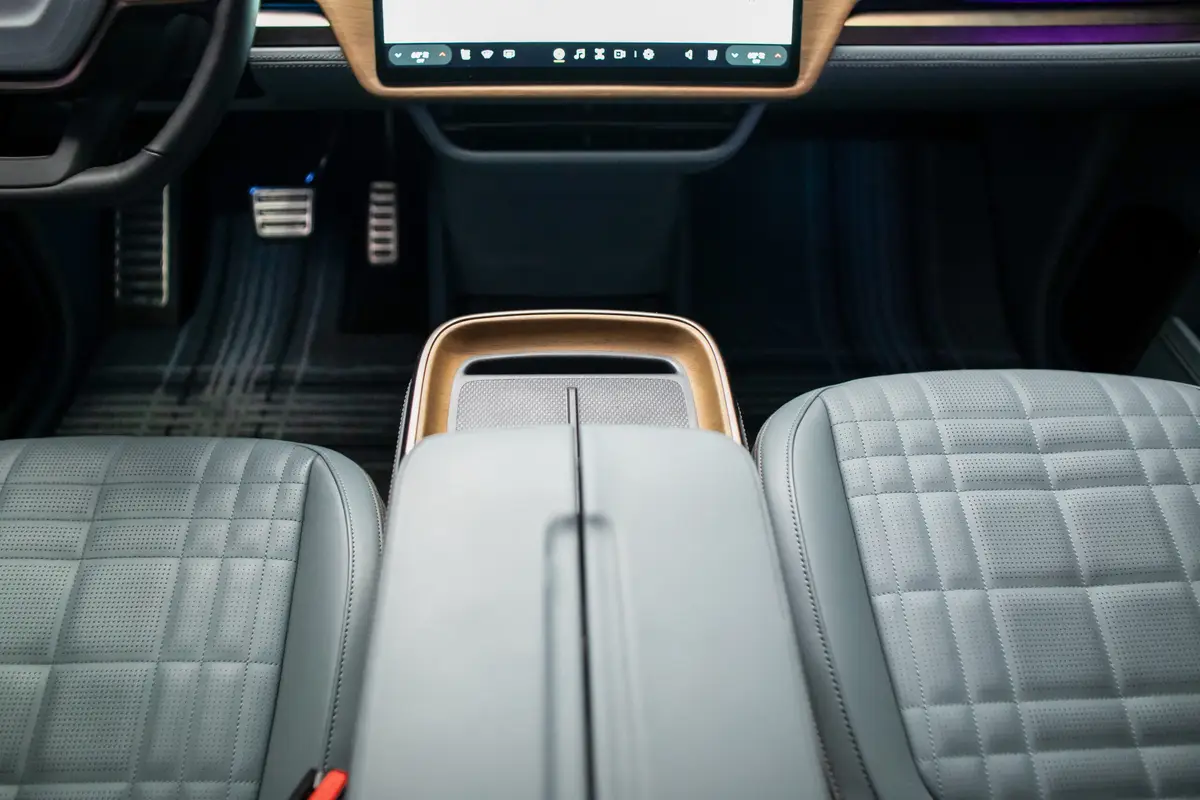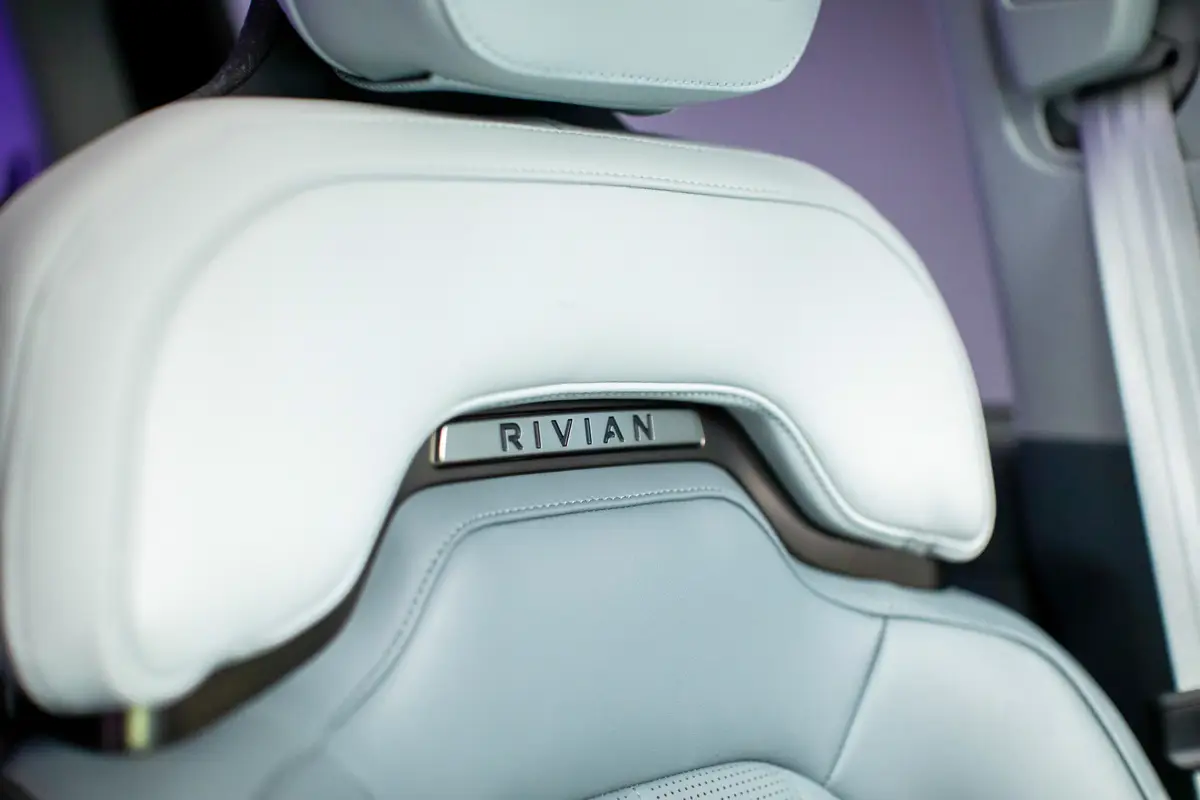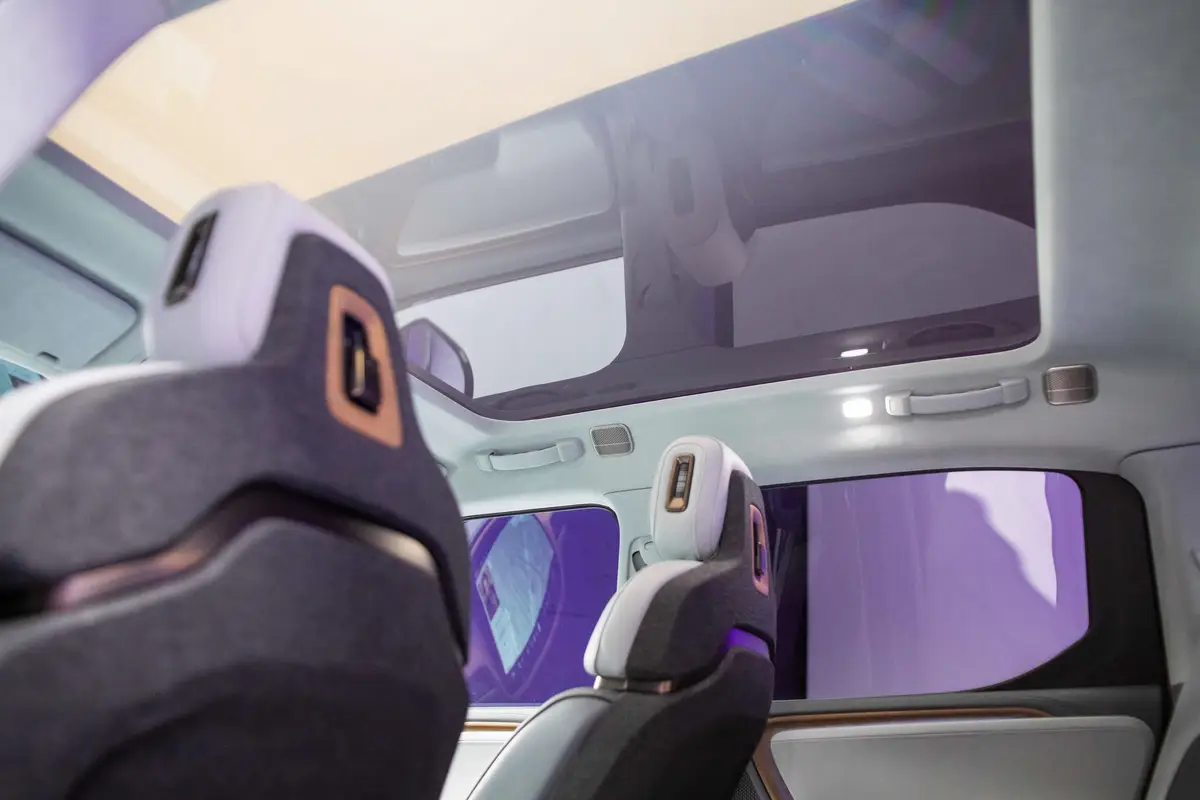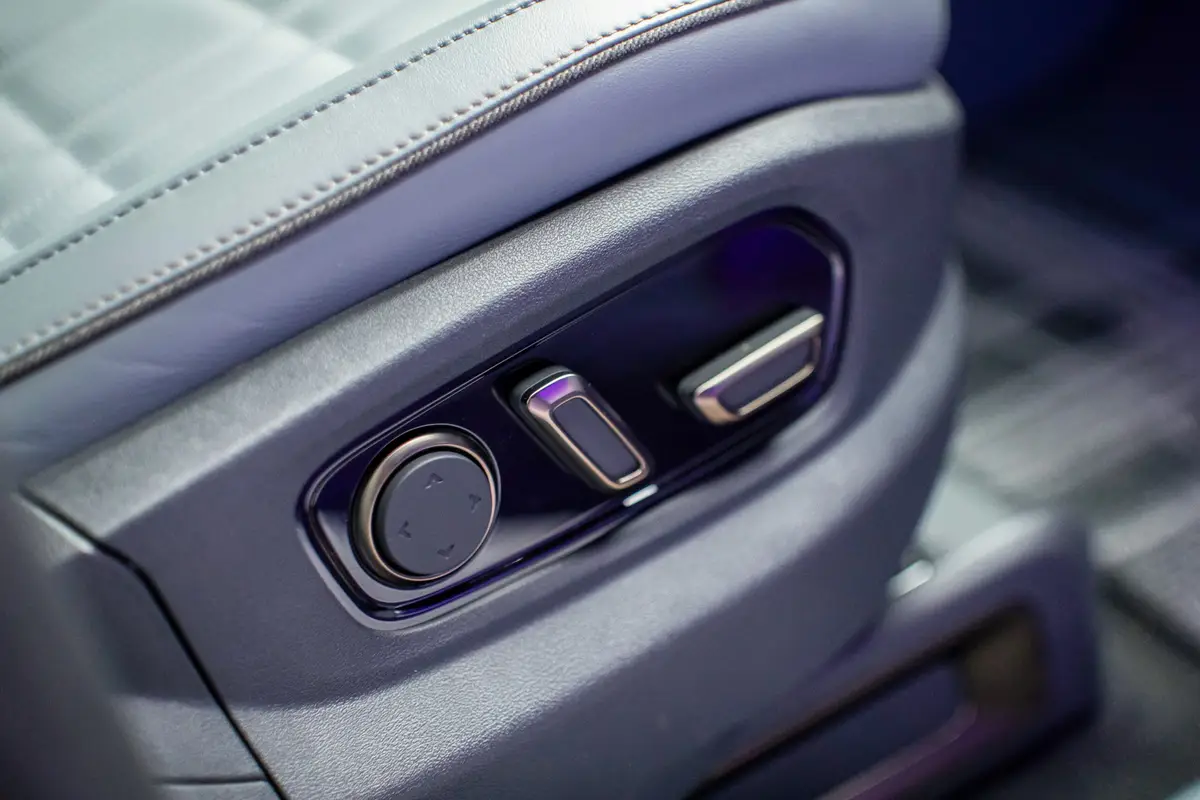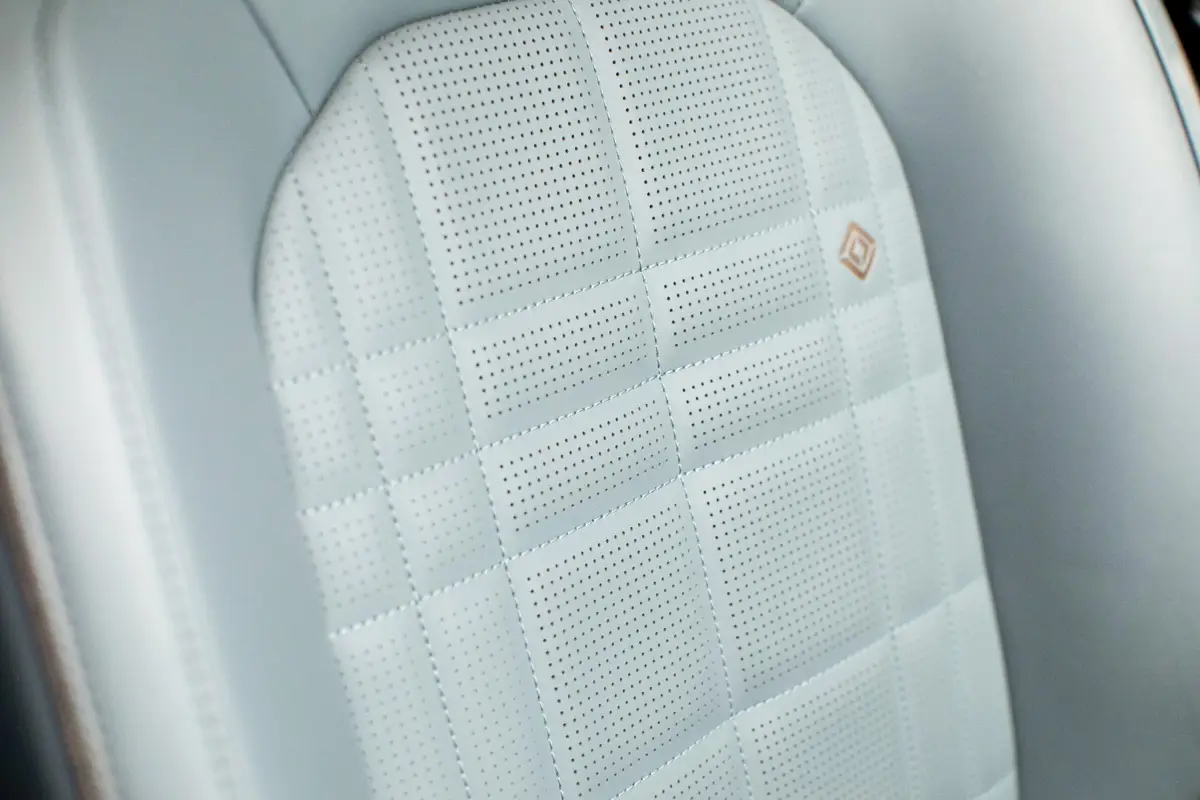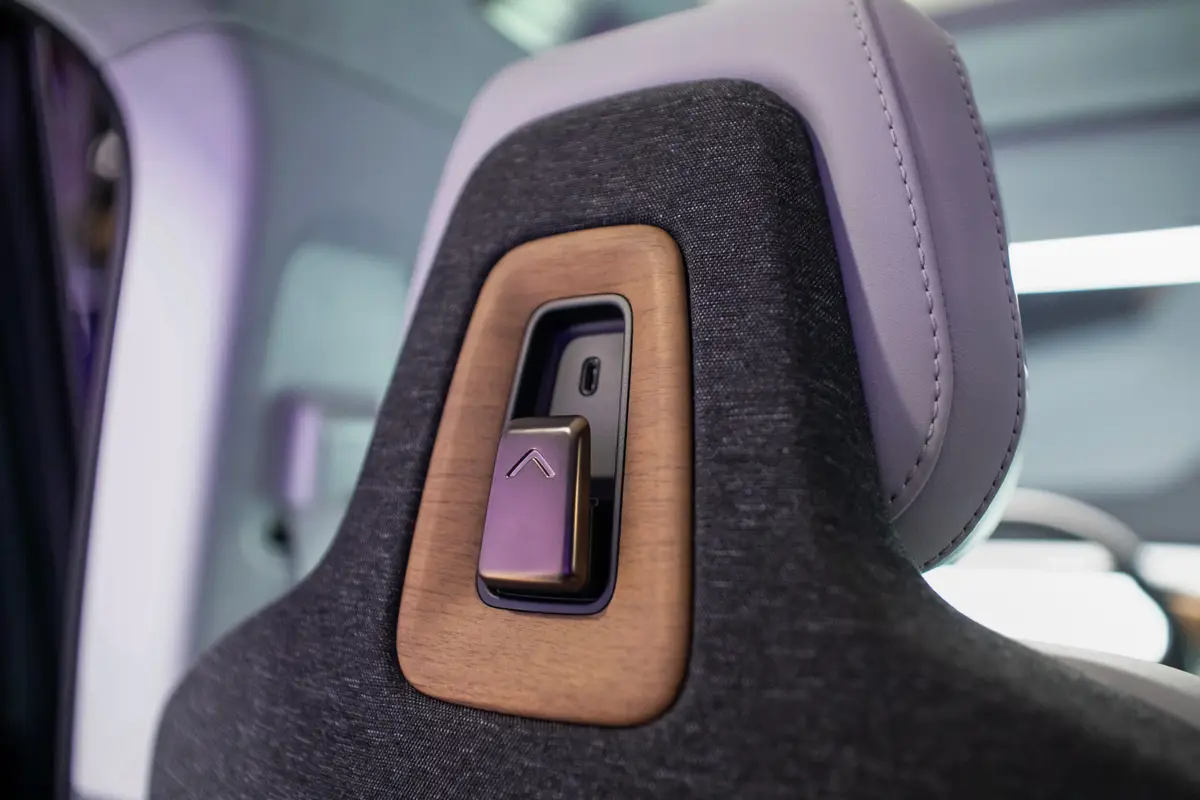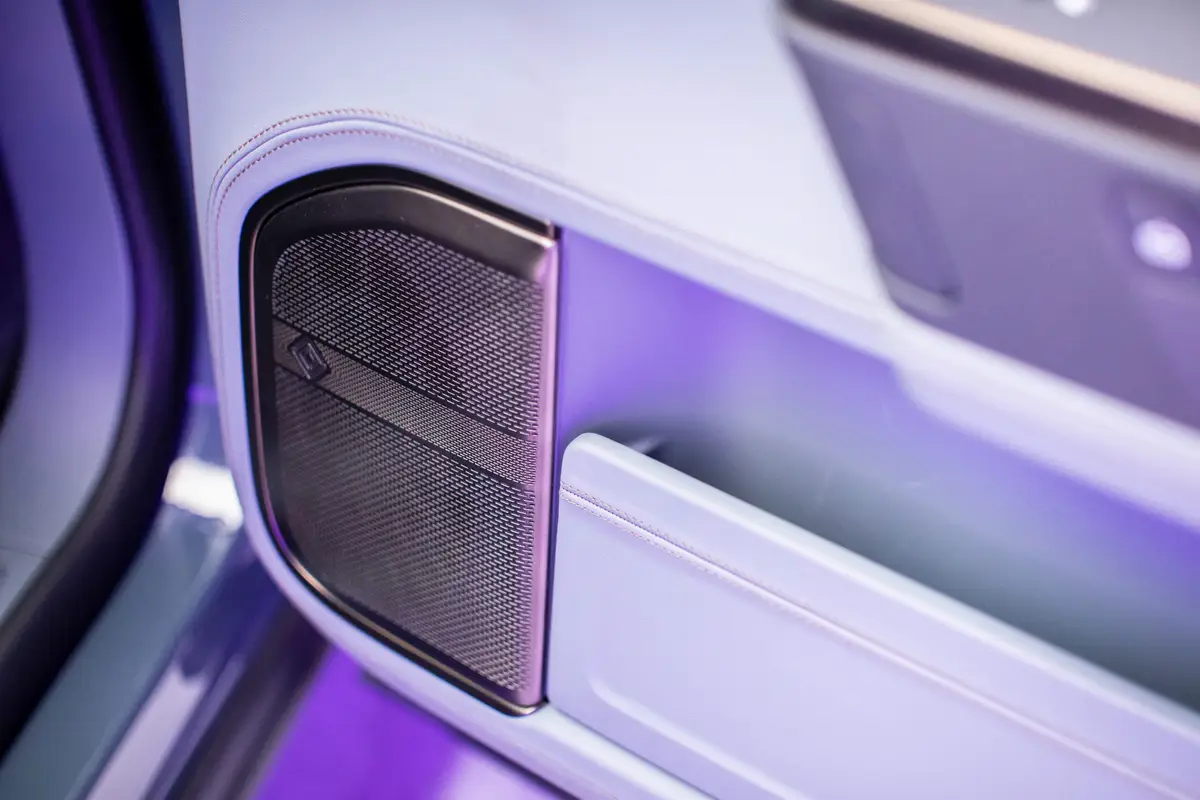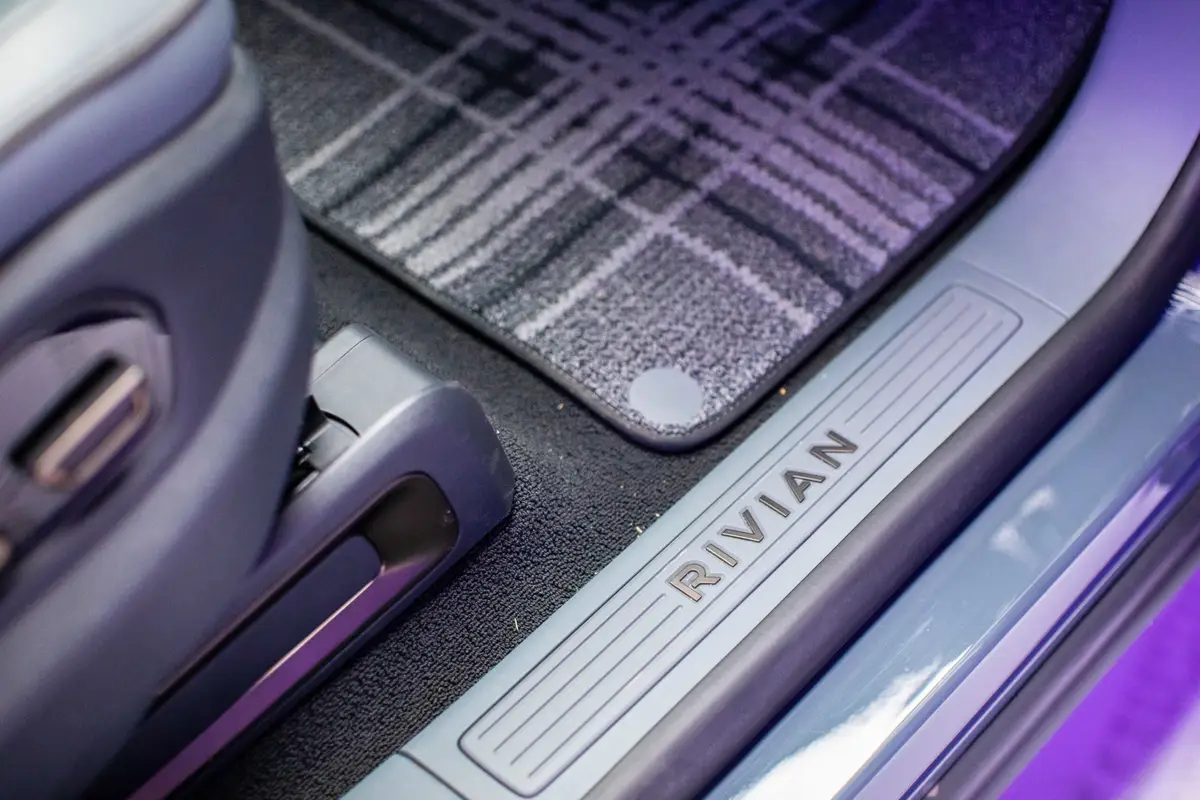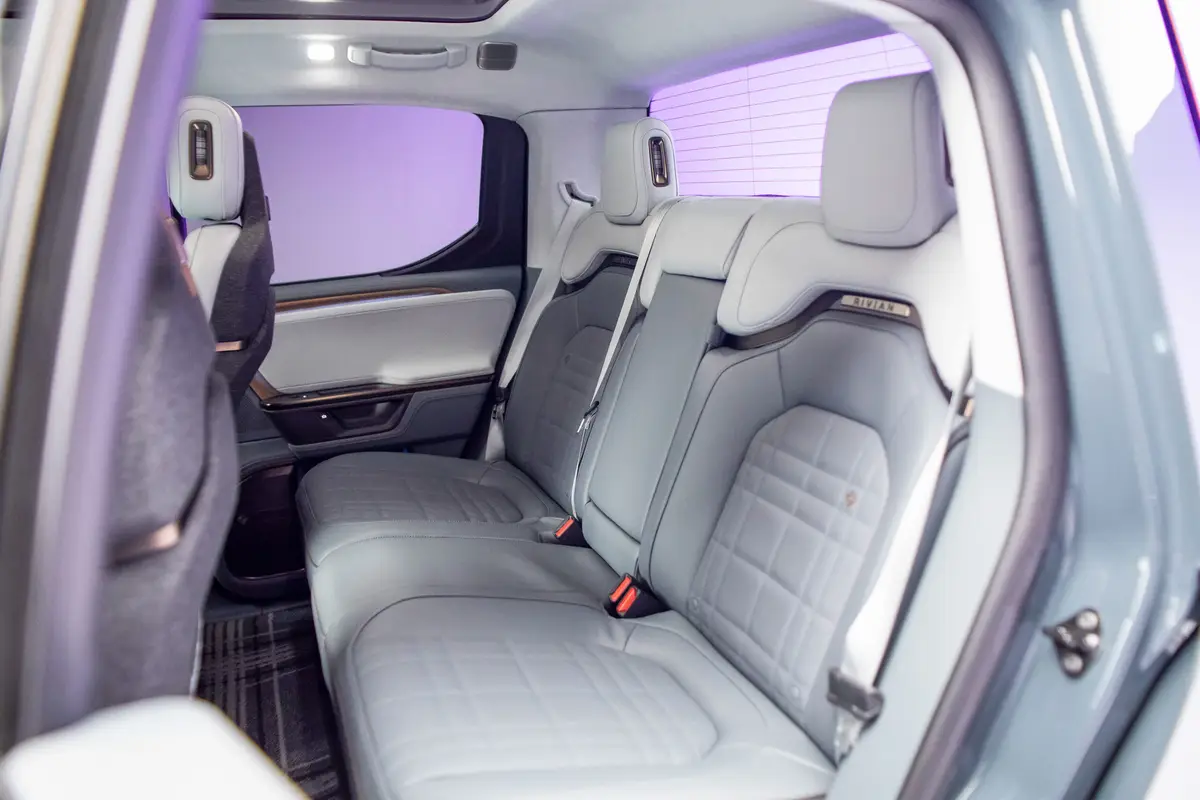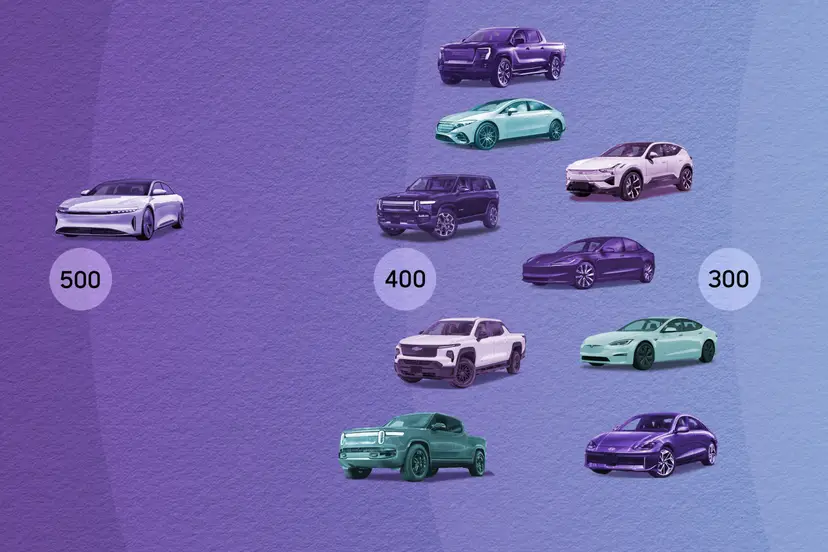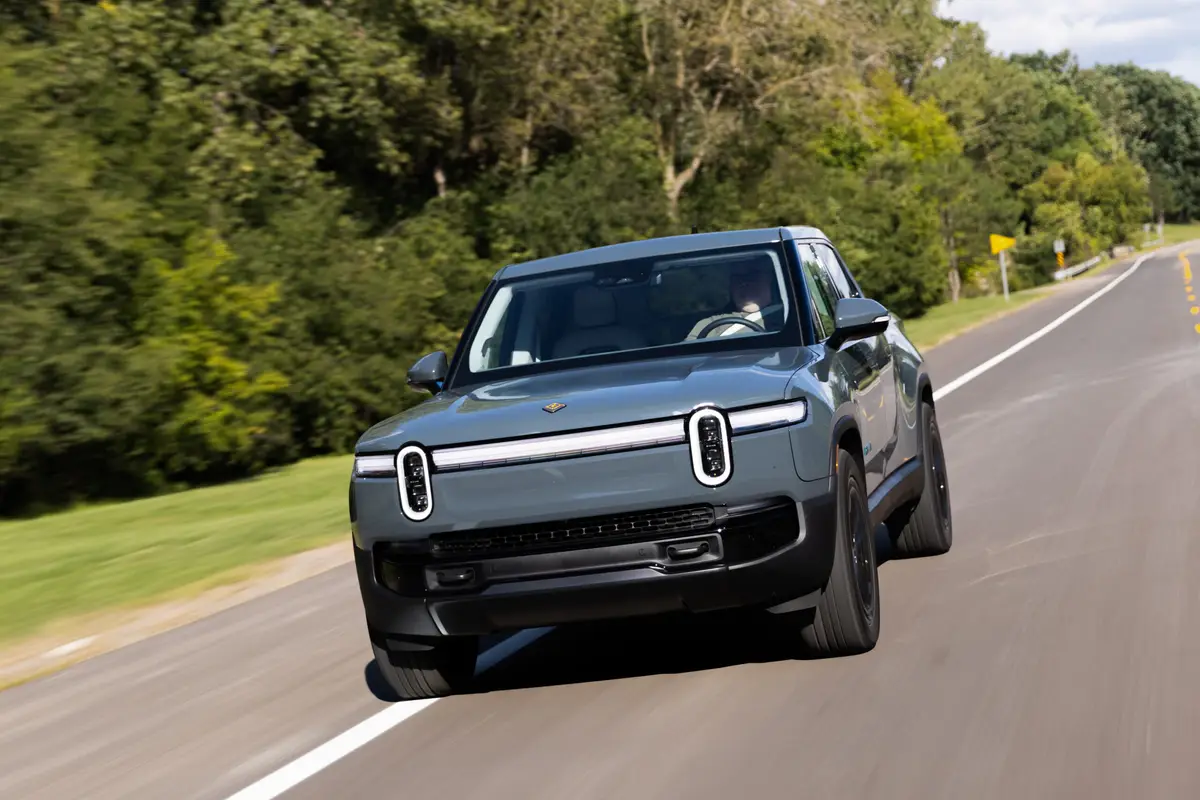
Key Points in This Review:
- Rivian’s updated, second-generation R1T electric pickup has a super-powerful Quad Motor version that brings explosive acceleration, individual-wheel-controlled all-wheel drive, and some slick off-road tricks.
- The Quad Motor isn’t, however, much quicker than the Tri Motor version, and its four-wheel control won’t be useful — or even noticeable — to drivers in on-road scenarios.
- Opting to spend more for the Quad Motor is a good choice only if you plan to drive it off-road or absolutely have to have the top trim — otherwise, the Tri Motor is a better value.
The Rivian R1T’s second generation arrived for the 2025 model year boasting improvements under the skin that increased the truck’s range with its Max battery, enhanced its ride quality and made it more user-friendly. With new in-house-built motors, the Tri Motor variant is now as impressive as was the first-generation Quad Motor — but the Quad Motor has also been improved, coming into 2025 with even more power and performance than before. All of which begs the question: With the new Tri Motor being so impressive, is it worth it to shell out even more money for the second-generation R1T Quad Motor?
Related: 2025 Rivian R1S and R1T Look Unchanged, Thoroughly Redesigned Under the Skin
How Much Does a 2025 Rivian R1T Cost?
- R1T Dual Standard: $70,990
- R1T Dual Motor: $77,990
- R1T Tri Motor: $100,990
- R1T Quad Motor: $115,900
The Rivian R1T comes in four configurations, with options available on some trims that allow for further customization, such as battery size and an off-road package. The base Dual Standard variant comes with the smallest standard battery pack, good for 258 miles of range (or 270 miles if you opt for 22-inch Range or Sport wheels). That version has 533 horsepower and can rocket from 0-60 mph in an eye-opening 4.5 seconds. Moving up to the R1T Dual Motor gets you Rivian’s Large battery pack, which is good for 329 miles of range and 533 hp, with an available Performance Pack that boosts output to 665 hp. That setup boasts a 3.4-second 0-60 mph time. Adding the Max battery pack ups range to 420 miles, and an All-Terrain Package is optional.
It’s a big jump in price and performance from those variants to the Tri Motor version: An additional $23,000 gets you that version, which comes standard with the Max battery and 850 hp coming from its three motors. It’s 0-60 mph time falls to just 2.9 seconds, and a lot of other equipment becomes standard, too, including a Sound + Vision Package and a powered tonneau cover. If you want to go all the way to the top, the Quad Motor generates 1,025 hp with its four motors, with 374 miles of range and a 0-60 mph time of 2.5 seconds. It costs another $15,000 on top of the Tri — and more than 50% more than the base Dual Standard — but it can hit 60 mph a full 2 seconds faster than the base R1T.
Related Video:
We cannot generate a video preview.
Spotting a Quad
- Takeaway: Styling changes for Rivian’s top-trim R1T Quad Motor are subtle, making it difficult to identify a Quad from a casual glance.
Even if you look really hard at the 2025 R1T Quad Motor, you’ll be hard-pressed to tell it’s a Quad. So here’s the thing to look for: teal. That quintessential 1990s color, which seemingly every Pontiac Grand Am of that era sported, has made a comeback in much of the Quad’s badging. You’ll see it on the “R1T” badge on the tailgate (where there’s also a subtle “Quad” badge), but its most prominent position is on the brake calipers. Officially, Rivian calls this color Laguna Beach Blue, but come on, I know teal when I see it. The Quad Motor trim also comes standard with a Darkout Package that blacks out all the trim accents, creating a menacing look — especially on black-painted trucks. A feature unique to the Quad Motor is a Gear Guard mascot on the tailgate, distinguishing this version for those who know what to look for.
My test R1T came with 22-inch Super Sport wheels and sticky Michelin performance tires, which make a big difference in how this truck handles. By contrast, the Dual Motor I drove earlier this year had the All-Terrain package’s off-road tires, which you won’t want unless you’re actually going off-roading or frequently find yourself on dirt roads.
The rest of the Quad Motor’s changes for 2025 are the same as those we’ve covered in other versions of the R1T. Its new adaptive LED headlight system up front, subtle styling updates and improved powered rolltop tonneau cover are all welcome, but the truck’s look remains nearly identical to the previous R1T. However, one subtle change that’s been rolled out throughout the year appeared on my test R1T Quad: the charging port has changed. A Tesla-style NACS port has replaced the old CCS port and will appear on all Rivians going forward. If you have a J1772 connector on your home charger, that means you’ll need an adapter to charge this new Rivian. It also means you can now charge your Rivian at a Tesla Supercharger without an adapter, and there are a lot of Superchargers around the country.
Not Much Interior Difference
- Takeaway: Like the exterior, the R1T Quad Motor’s interior doesn’t differ significantly from the rest of the trim levels, but it’s still a very nice place to be.
Pop inside the Quad and it’s not much different from other versions of the R1T. There are some slightly different colors, but the shapes, materials and seats are the same as those in other versions. It’s a great cockpit, though, and solidly built — it’s a dramatic improvement in quality compared with the first examples I saw a few years ago. It fully feels like a luxury vehicle, with beautiful textures, shapes and lighting. This is what the Tesla Cybertruck should have looked like inside instead of … well … how it actually looks.
While the new Rivian multimedia system and displays are big, bright and fairly easy to use, one of our biggest gripes about them is a continued trend toward putting controls in the touchscreen that shouldn’t be there. Steering-wheel and mirror adjustments we can forgive — you typically set those once, tie them to your driver profile and never really need to touch them again. But putting the climate and vent position controls in a touchscreen climate menu is unacceptable. If you want to adjust the way air is blowing on you while driving, it’s a massive distraction to do so — and forget having your mom try to adjust her vents on her own. It’s a way for automakers to save a little cash through simplified design and assembly, but that shouldn’t come before ease of use.
Other actual improvements for the second-generation R1T include an excellent new multimedia system, as well as computer enhancements that you can’t see. It’s a little disappointing that Rivian doesn’t offer much in the way of extra-spiffy accommodations to get you to choose the Quad Motor over the Tri Motor, but what it absolutely does offer is power.
Four Loco
- Takeaway: With 1,025 hp, four motors and the ability to spin in place off-road, the R1T Quad Motor sports some extraordinary abilities, but many aren’t usable on the street.
With four motors — one for each wheel — output in the R1T Quad climbs to 1,025 hp and 1,198 pounds-feet of torque. Rivian says it’s good for a 0-60 mph sprint of just 2.5 seconds, with a quarter-mile time of 10.5 seconds. That’s incredibly quick for a pickup truck that weighs nearly 7,000 pounds. The battery is also good for 374 miles of EPA-rated range, which isn’t too shabby. Rivian says the truck’s range can be extended to 400 miles if you drive cautiously in Conserve mode.
It’s a lot of power on paper, but using all that extra oomph is tough in daily life. Most of the time you’ll want to drive in the Quad’s All Purpose drive mode, in which the truck is easy to drive, smooth, compliant and comfortable. Ride quality is excellent, especially when put into the softest suspension mode. Acceleration is linear, and accelerator pedal response isn’t too jumpy. Popping the Quad into Sport mode, though, brings an attitude adjustment. Accelerator response is more immediate, steering response sharpens noticeably and the truck’s regenerative braking gets a bit more aggressive. All this is adjustable, too, through a kind of choose-your-own-adventure system called the RAD Tuner. It allows you to fine-tune a bunch of different settings through the central touchscreen, essentially making your own drive modes. This level of granular drive mode control is unprecedented, and it’s pretty cool to play with.
The R1T Quad Motor can also do some neat tricks thanks to each motor’s ability to control each wheel independently. It can do a “tank turn” on dirt or slippery surfaces, in which the wheels on one side of the truck rotate in the opposite direction of the other side, allowing the truck to spin in place. It can also do what Rivian calls a “kick turn,” which can dramatically tighten the truck’s turning circle. You really should only do this in the dirt, however, to safeguard your truck.
Here in suburban Detroit, there’s not much need for a Quad Motor because there’s nowhere you can really play with it like you could in an area with fun roads. My recommendation on whether you should spend the extra coin for one over a Tri Motor (or heck, even a Dual Motor, which is itself plenty fast) really is geographically dependent: If you live somewhere with fun roads or off-roading parks, absolutely go for the big-money, big-motor Rivian. If you don’t, save a little cash and enjoy a lesser version with longer range. There isn’t a bad Rivian in the bunch, and they’re all pretty damn fantastic to drive.
Is It Worth the Extra Cost?
The starting price of a ’25 R1T Quad Motor is $115,900 including delivery fee, and the total as-tested price for my test truck, which had a few paint and interior options, rang up at about $123,000. That’s a significant jump over the $71,000 cost of a basic Dual Standard truck with the standard-range battery pack.
Of course, the new Quad Motor isn’t all that much more expensive than a loaded Tri Motor, but it’s enough to make us question whether or not it’s worth spending that extra money. I say spend it if having maximum acceleration is worth it to you, or if you plan on doing some off-roading and you’d use and enjoy the extra agility of the kick turn. Likewise, if you just want the novelty of having the most powerful, quickest electric pickup on the market, go for it. But for my money, and given I’d only be able to use it on-road, I’d stick with the Tri Motor version instead. The Quad just doesn’t feel as special as it should for that price.
More Rivian News From Cars.com:
- How Do Car Seats Fit in a 2024 Rivian R1T?
- 2024 Rivian R1T: Unexpected Utility
- 2024 Rivian R1T Gets Updated Rating, Named IIHS Top Safety Pick+
- Electric Cars With the Longest Range
- Every New Electric Car Starting Price and Range Available Right Now
Cars.com’s Editorial department is your source for automotive news and reviews. In line with Cars.com’s long-standing ethics policy, editors and reviewers don’t accept gifts or free trips from automakers. The Editorial department is independent of Cars.com’s advertising, sales and sponsored content departments.











